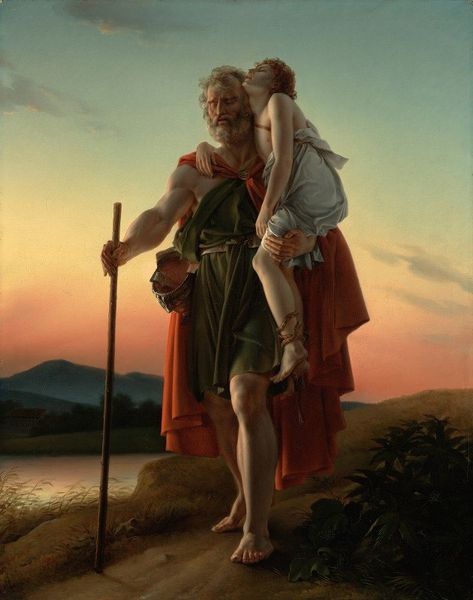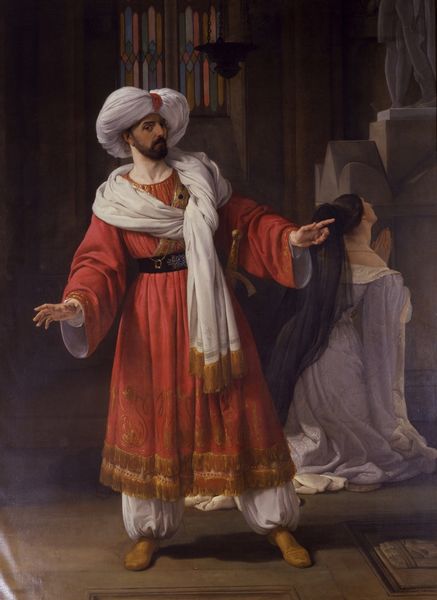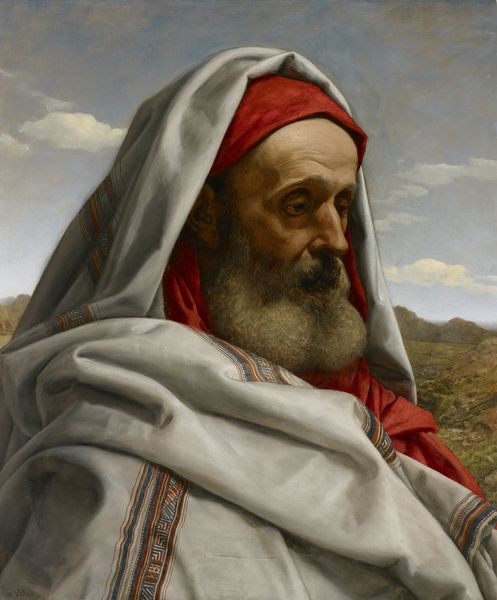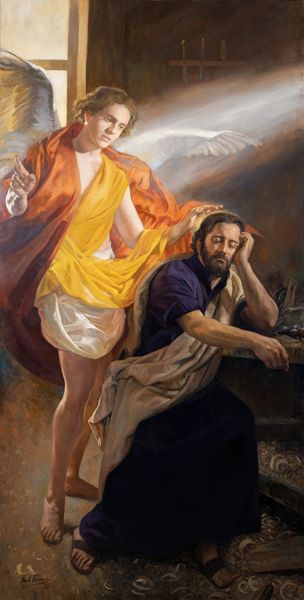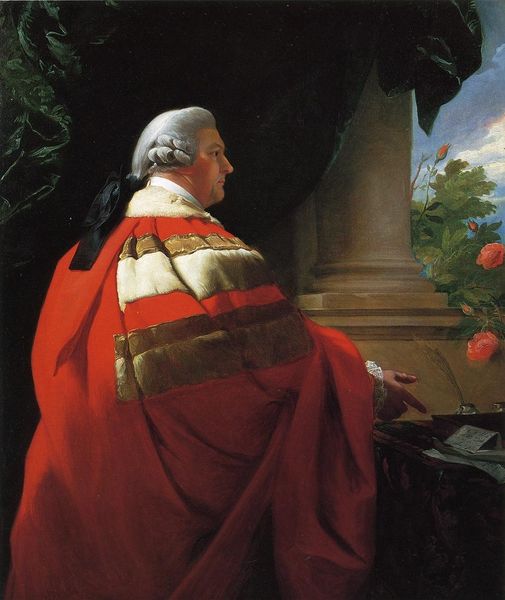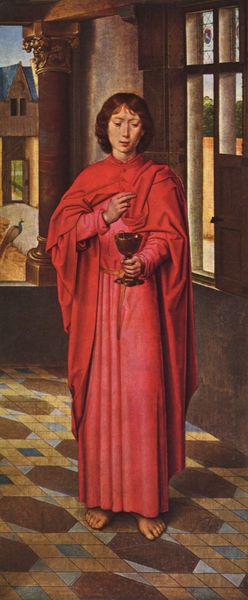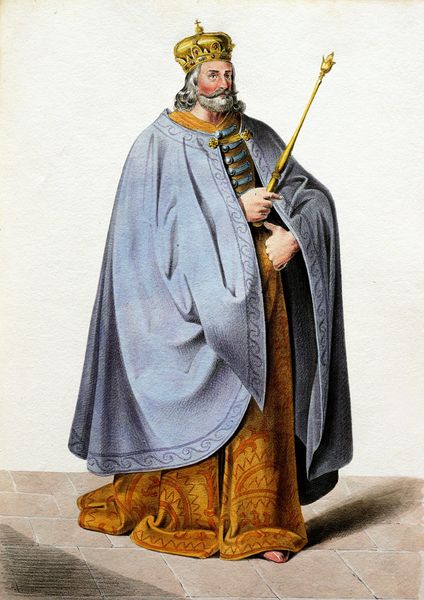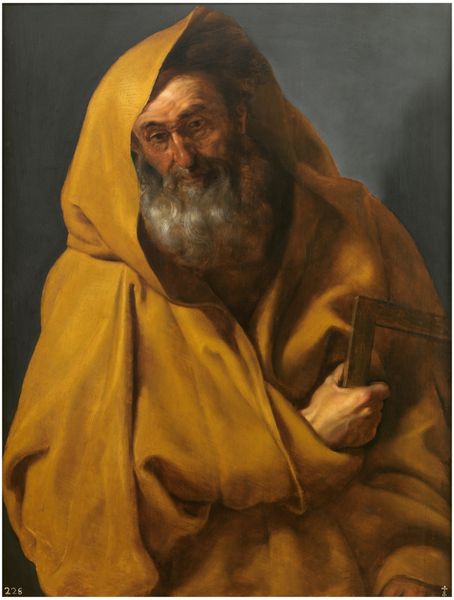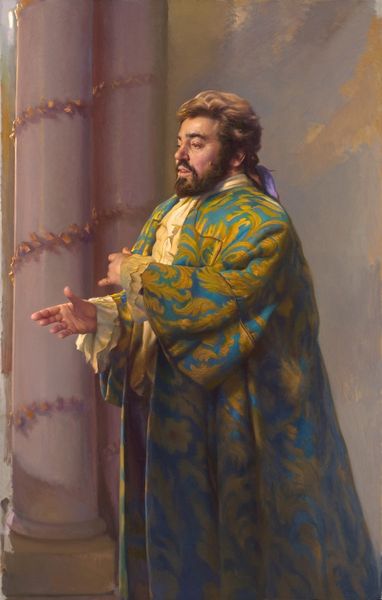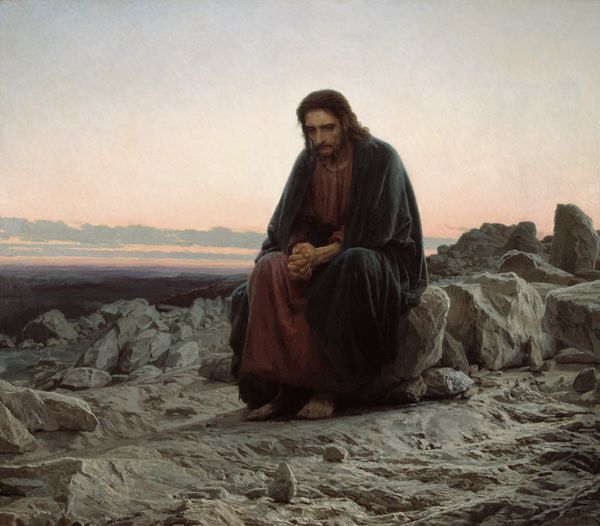
Copyright: Public domain
Curator: This is Raimundo de Madrazo y Garreta's "Athaulf," an oil painting completed in 1858 and now held at the Museo del Prado. Editor: Immediately I'm drawn to that vibrant orange cloak against the softer blues of the sea and sky; it's an almost theatrical choice of color that amplifies the drama of his thoughtful gaze. Curator: Indeed. Consider Madrazo’s training and approach: he builds the painting on layers of historical research, blending realism with Romantic sensibilities. He captures textures from the subtle shimmer of Athaulf's helmet to the weave of the textiles, carefully selected, I suspect, to convey not just accuracy, but luxury befitting a Visigothic king. Editor: Right, you get that feeling of weight and quality just from the visual representation! I find it fascinating how painters then grappled with representing historical figures... did they obsess over getting the costume details perfect or what? Curator: There’s evidence Madrazo referenced contemporary archeological finds, which reveals a clear effort towards documentation through art, reflecting academic methods prevalent then. Notice too how light reflects on the metal; this emphasizes artistry combined within this historical rendering and reflects class hierarchies by showing craftsmanship. Editor: And speaking of that gaze... He’s looking outwards but not at anything in particular, almost like he's weighing the future in his hands. What sort of processes or sources might've shaped Madrazo's decisions here? Did other contemporary portrayals of nobility inform his choices, perhaps? Curator: Certainly, it resonates with Romantic portrayals of powerful men burdened by destiny, popular during this era. The deliberate brushstrokes of his skin tone, that bright orange, even the position of the architecture. They elevate his subject by integrating ideas that link politics and production under refined materials. Editor: The light and shadows playing on the stone of that little lookout feel so contemporary, so modern compared to some of those older history paintings! Almost like a set piece on a stage—which, really, this canvas is. I guess, it suggests historical representation shifts depending who funds art? Curator: Funding definitely shaped production, yet, too, can Madrazo not capture Athaulf’s place among those he might have inspired when looking through his eyes and perspective as shaped both within the era and now still alive among our own? Editor: Very true! So while this historical staging whispers narratives both past and future, maybe its greatest appeal rests in its complex, crafted surface – its artistic making more impressive for the layers unveiled beneath first view!
Comments
No comments
Be the first to comment and join the conversation on the ultimate creative platform.
